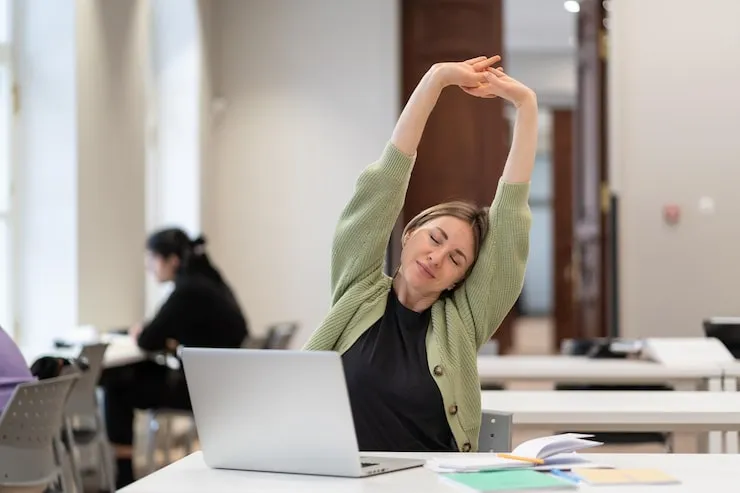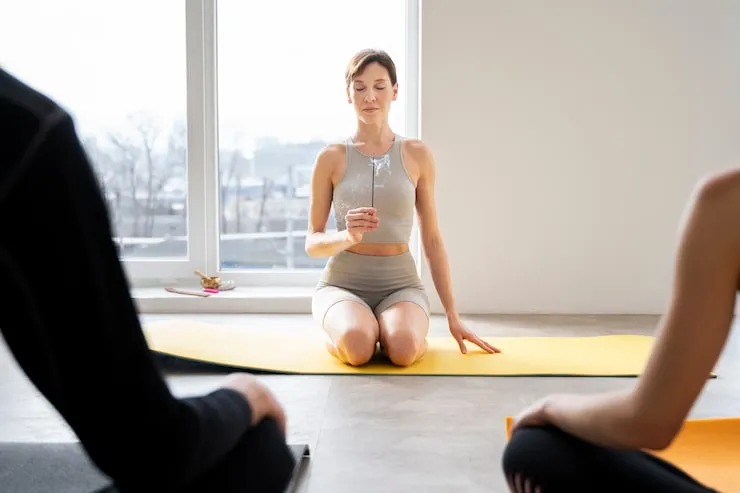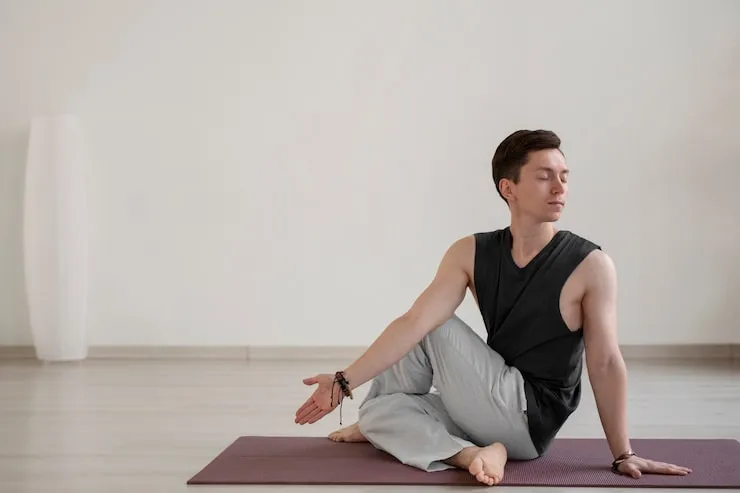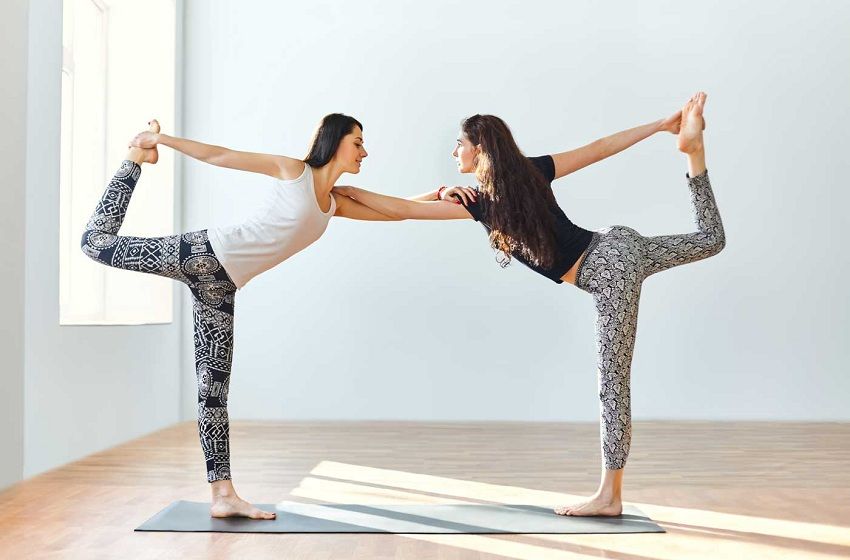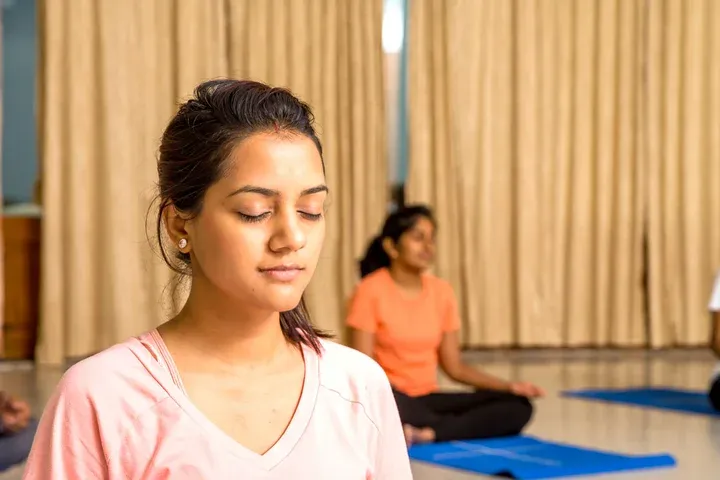Lying Down Yoga Postures: Relax, Restore, and Rejuvenate
Lying Down Yoga Postures with standing postures, streaming groupings, and strength-building asanas. But did you know that a few of the most capable yoga stances are done lying down? These stances, moreover known as prostrate yoga postures, offer assistance unwind the body, calm the intellect, and tenderly extend muscles without strain.
Whether you’re a fledgling, recuperating from weariness, or basically looking for remedial hones, lying down yoga stances can be transformative. They require negligible exertion however give profound physical and mental benefits.
In this direct, we’ll investigate the beat lying down yoga stances, their benefits, step-by-step enlightening, and tips to coordinated them into your every day practice.
Read Also: Yoga Poses for Posture Correction: What You Need To Know
Why Lying Down Yoga Stances Matter?

- Lying down yoga postures are regularly neglected, but they are fundamental for:
- Deep unwinding: Makes a difference decrease push and pressure in the body.
- Improved adaptability: Delicate extends without weight on joints.
- Better rest: Calms the anxious framework, making it simpler to drop asleep.
- Recovery: Perfect for individuals with restricted portability, back torment, or post-workout soreness.
- Mind-body association: Energizes careful breathing and internal awareness.
- These postures are idealize for anyone—from fledglings to progressed yogis who need a calming however successful practice.
1. Savasana (Cadaver Pose)
Benefits: Advances unwinding, decreases push, and progresses mindfulness.
How to do it:
- Lie level on your back with legs marginally separated and arms loose by your sides.
- Close your eyes and let your body feel overwhelming against the mat.
- Focus on your breath, breathing in and Lying Down Yoga Postures.
Stay for 5–10 minutes.
Tip: Utilize a pad beneath your knees if you have lower back discomfort.
2. Supta Baddha Konasana (Leaned back Bound Point Pose)
Benefits: Opens the hips, decreases uneasiness, and advances circulation.
How to do it:
- Lie on your back and bring the soles of your feet together.
- Let your knees drop open to the sides.
- Place pads beneath your knees for bolster if needed.
- Rest your hands on your paunch or by your sides.
- Hold for 3–5 minutes, breathing deeply.
3. Supta Matsyendrasana (Recumbent Spinal Twist)
Benefits: Calms back torment, helps absorption, and discharges pressure in the spine.
How to do it:
- Lie on your back with arms extended out in a “T” shape.
- Bend your right knee and cross it over the cleared out side of your body.
- Keep your shoulders level on the ground.
- Turn your head to the right for a more profound stretch.
- Hold for 1–2 minutes, at that point switch sides.
4. Ananda Balasana (Upbeat Child Pose)
Benefits: Extends the lower back and hips, diminishes weariness, and calms the mind.
How to do it:
- Lie on your back and bring your knees toward your chest.
- Hold the exterior edges of your feet with your hands.
- Keep your lower legs over your knees and tenderly shake side to side.
- Stay for 1–2 minutes.
- 5. Setu Bandhasana (Bridge Pose)
Benefits: Fortifies the glutes, opens the chest, and decreases stress.
How to do it:
- Lie on your back with knees bowed and feet hip-width apart.
- Press your feet into the ground and lift your hips upward.
- Interlace your hands beneath your back and press shoulders down.
- Hold for 30–60 seconds, at that point discharge slowly.
6. Viparita Karani (Legs-Up-the-Wall Pose)
Benefits: Diminishes tired legs, progresses circulation, and advances relaxation.
How to do it:
- Sit sideways another to a divider and swing your legs up as you lie back.
- Adjust your position so your hips are near to the wall.
- Let your arms rest open at your sides.
- Stay for 5–10 minutes, breathing deeply.
Tip: Put a pad beneath your hips for additional support.
7. Supta Padangusthasana (Leaning back Hand-to-Big-Toe Pose)
Benefits: Extends hamstrings, reinforces legs, and progresses flexibility.
How to do it:
- Lie on your back with legs extended.
- Lift your right leg and hold your enormous toe with your right hand (or utilize a strap).
- Keep your cleared out leg grounded and straight.
- Hold for 30–60 seconds, at that point switch sides.
8. Leaned back Pigeon Posture (Supta Kapotasana Variation)
Benefits: Opens hips, diminishes sciatic torment, and facilitates lower back tension.
How to do it:
- Lie on your back with knees bent.
- Cross your right lower leg over your cleared out thigh.
- Hold behind your cleared out leg and tenderly drag it toward your chest.
- Keep your shoulders relaxed.
- Hold for 1–2 minutes on each side.
9. Supta Virasana (Leaned back Saint Pose)
Benefits: Extends thighs and hip flexors, progresses absorption, and opens the chest.
How to do it:
- Kneel with your knees together and feet somewhat more extensive than hips.
- Sit between your heels.
- Slowly incline back onto your elbows, at that point onto your back if comfortable.
- Use pads beneath your back for support.
- Stay for 1–2 minutes.
- Dodge if you have knee or lower leg injuries.
You May Also Like: Yoga Stretches for Sciatica: Gentle Relief and Healing Through Movement
10. Shavasana with Guided Breathing (Yoga Nidra Prep)
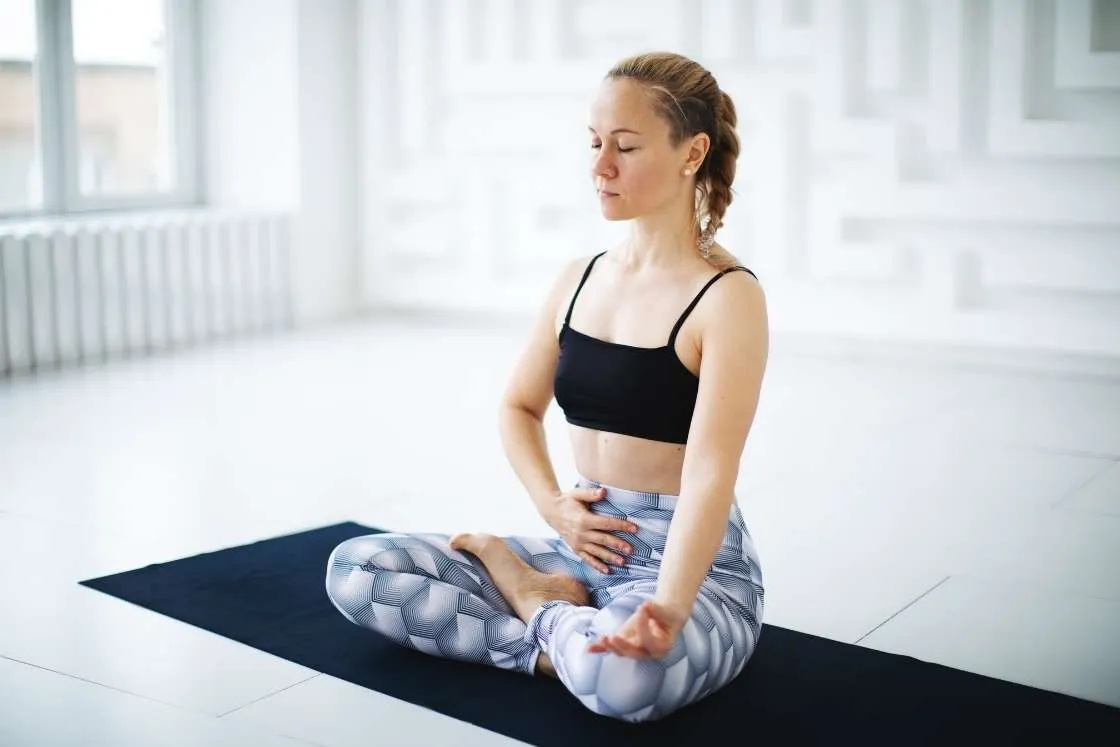
Benefits: Plans for profound unwinding, diminishes uneasiness, and upgrades focus.
How to do it:
- Lie level in Savasana.
- Close your eyes and center on breath awareness.
- Slowly filter your body, discharging pressure from head to toe.
- Stay for 10–15 minutes.
- This can move into Yoga Nidra, a guided reflection for total relaxation.
Tips for Practicing Lying Down Yoga Postures
- Use props: Supports, pads, and covers improve comfort.
- Focus on breathing: Breathe in profoundly through the nose, breathe out slowly.
- Create a calm space: Dim lighting, delicate music, or hush can develop relaxation.
- Practice some time recently bed: These postures get ready the body for relaxing sleep.
- Be delicate: Maintain a strategic distance from pushing yourself into discomfort these postures ought to Lying Down Yoga Postures.
Benefits of a Recumbent Yoga Routine
- Reduces push & uneasiness: Actuates the parasympathetic anxious system.
- Supports way better pose: By delicately discharging tight muscles.
- Improves adaptability: Particularly in the hips, hamstrings, and back.
- Aids absorption: Delicate turns and extends knead inner organs.
- Enhances mindfulness: Empowers you to remain show and associated to breath.
Sample 20-Minute Lying Down Yoga Flow
- Savasana (2 min)
- Supta Baddha Konasana (3 min)
- Happy Infant Posture (2 min)
- Supine Spinal Turn (2 min each side)
- Bridge Posture (1 min)
- Legs-Up-the-Wall (5 min)
- Yoga Nidra Prep (5 min)
- This brief grouping can be done anytime you require to loosen up, particularly some time recently rest.
Conclusion
Lying down yoga stances are confirmation that yoga doesn’t have to be strongly or complicated to be viable. These postures give delicate extends, advance internal calm, and offer assistance you reconnect with your body. Whether you’re winding down after a long day, recouping from a workout, or essentially looking for a minute of peace, these recumbent asanas offer the idealize solution.
Roll out your tangle, lie back, breathe profoundly, and let these stances direct you into unwinding and restoration. In some cases, the most capable Lying Down Yoga Postures.


